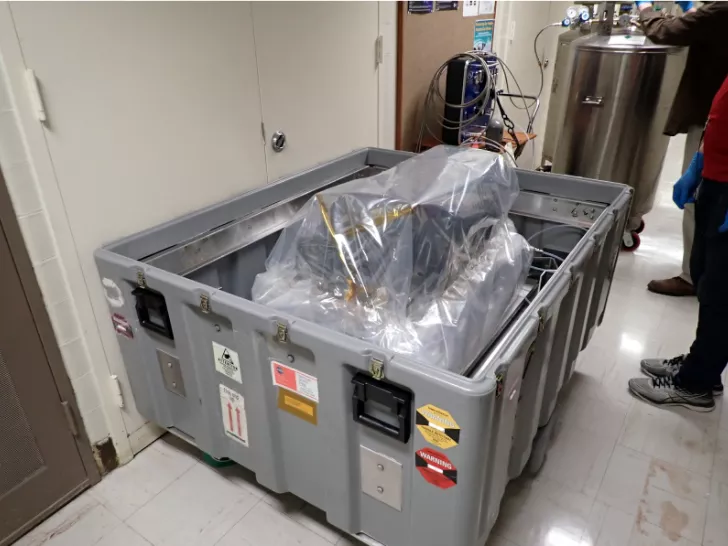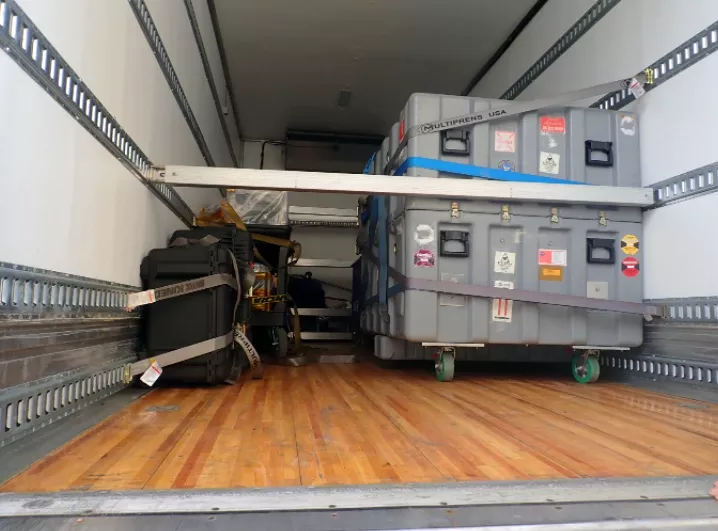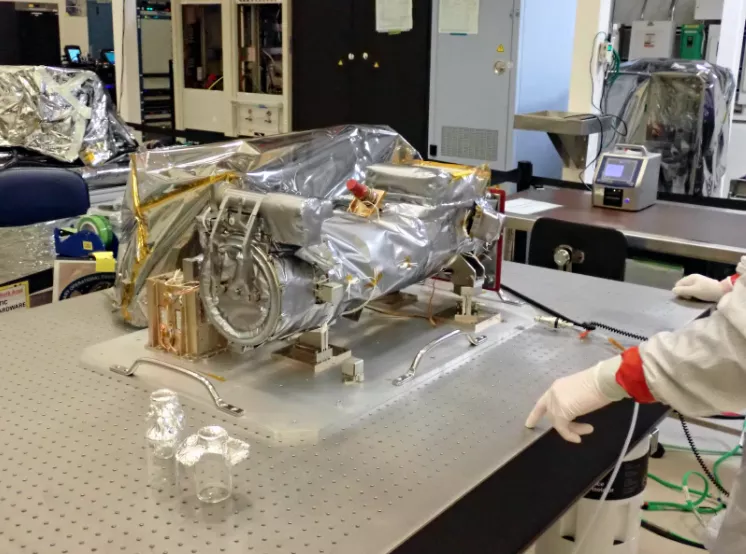A cutting-edge new instrument is ready to be installed on NOAA’s GOES-U satellite, which is scheduled to launch in 2024.
The Compact Coronagraph (CCOR-1) instrument was shipped to Lockheed Martin in Waterton, Colorado after passing its Pre-Ship Review last month. The team at Lockheed Martin will now begin to install this instrument onto the GOES-U spacecraft, which is scheduled to launch in 2024. The CCOR-1 will be NOAA’s first-ever solar coronagraph.
As part of NOAA’s Space Weather Follow-On Program, CCOR-1 was developed at the U.S. Naval Research Laboratory in Washington, DC, and will reside on GOES-U’s Solar Pointing Platform, along with other space weather monitoring sensors. These include the Solar Ultraviolet Imager (SUVI) and Extreme Ultraviolet and X-ray Irradiance Sensors (EXIS).
CCOR-1 will monitor the outer layer of the sun’s atmosphere, known as the solar corona, and will help detect and characterize coronal mass ejections (CMEs). These large eruptions from the sun hurl massive clouds of magnetized plasma far into space and are the primary cause of geomagnetic storms, which can cause widespread damage to power grids, satellites, and communication and navigation systems on Earth if we happen to be in the way.
The critical space weather information collected by CCOR-1 will ensure continuity of critical CME imagery to enable the National Weather Service Space Weather Prediction Center to issue warnings 1–4 days prior to damaging geomagnetic storm conditions.



